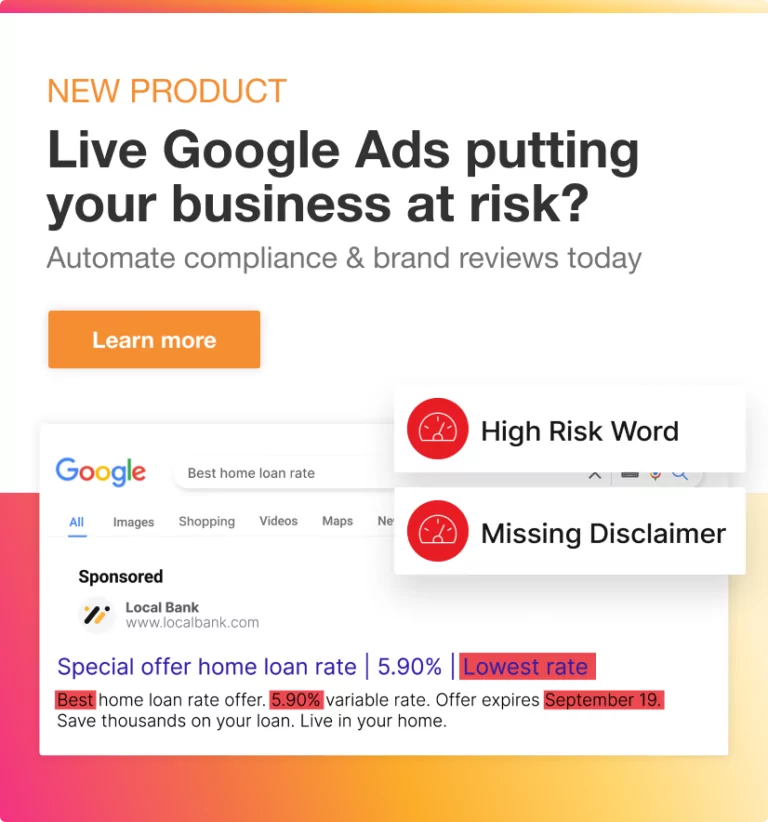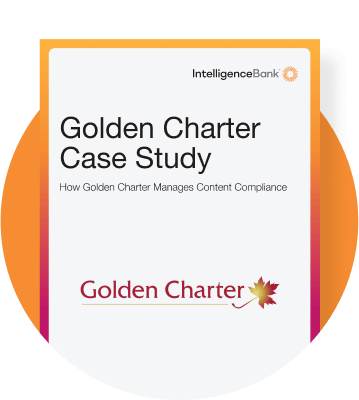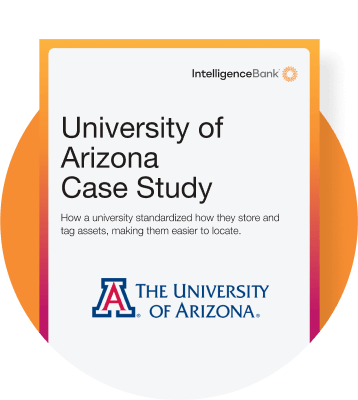The regulatory environment in the United States is complex, particularly when it comes to banking. With multiple laws and guidelines governing how banks communicate with their audiences, complying with each rule is a time consuming – yet necessary – day-in-day out task. Among the many regulations governing bank marketing, Regulation P stands out as a critical framework for ensuring the privacy and security of consumer financial information.
Regulation P, requires financial institutions to provide clear and transparent privacy notices to customers and restricts the sharing of nonpublic personal information. For marketers, this means ensuring that all communications – whether digital ads, email campaigns, or direct mail – comply with these privacy requirements.
This guide reviews the key aspects of Regulation P, the risks of non-compliance, and how AI and automation can simplify the process. Whether you’re launching a new campaign or reviewing existing materials, understanding these rules is essential to ensuring your marketing efforts are both effective and legally sound.
Disclaimer: This document is not intended as a substitute for legal advice. This report has been prepared using both public and private data by IntelligenceBank, a provider of software that helps companies stay on brand and adhere to regulatory compliance. Companies should seek professional legal and regulatory advice when establishing internal compliance protocols.
What is Regulation P?
Regulation P is a federal regulation that implements the privacy provisions of the Gramm-Leach-Bliley Act (GLBA). It is designed to protect customers’ information and requires banks, credit unions, and other financial institutions to be transparent about how they collect, share, and protect nonpublic personal information (NPI). This includes giving customers the option to limit certain types of data sharing, like selling it on third party marketers.
Key requirements include:
- Privacy Notices: Financial institutions must provide customers with clear and conspicuous privacy notices that explain what information is collected, how it is used, and with whom it is shared.
- Opt-Out Rights: Customers must be given the opportunity to opt out of having their NPI shared with nonaffiliated third parties.
- Data Security: Institutions must implement safeguards to protect customer information from unauthorized access or use.
For bank marketers, Regulation P impacts everything from email campaigns to digital ads, requiring careful attention to privacy disclosures and opt-out mechanisms.
What Are the Risks of Non-Compliance with Regulation P?
Marketing compliance is no joke. Failing to comply with Regulation P can have serious consequences for banks in the United States. Here’s what’s at stake:
Financial Penalties
Regulators like the Consumer Financial Protection Bureau (CFPB) and the Federal Trade Commission (FTC) have the authority to impose significant fines for non-compliance. Violations of Regulation P can result in penalties of up to $1 million per day, depending on the severity of the breach.
Reputational Damage
A publicized compliance failure erodes customer trust and damages brand reputation. In an industry where trust is paramount, this can lead to lost business and long-term harm.
Increased Regulatory Scrutiny
Banks that breach Regulation P may face heightened scrutiny from regulators, including more frequent audits and inspections. This can be both time-consuming and costly.
Legal Action
If a substantial breach occurs, non-compliance can lead to lawsuits from customers or other stakeholders who feel their privacy rights were violated.
These risks underscore the importance of getting marketing compliance right. But with so many rules to follow, shrinking resources and pressure to execute effective marketing strategies, how can banks ensure their materials meet all requirements without overwhelming their teams?
Challenges of Maintaining Compliance with Regulation P
Complying with Regulation P across all marketing touchpoints can be a tall order. Here are some of the key challenges banks face:
High Volume of Marketing Content
There has never been a time where marketing content volume has been greater than it is now. Production is at an all time high thanks to digital marketing and generative AI. Banks utilize most channels of communication available, such as social media, digital ads, email campaigns and brochures. Every piece of content must be reviewed for compliance with Regulation P, and this creates a heavy workload for legal and compliance teams.
Tight Deadlines
Marketing teams often operate under tight deadlines, with campaigns needing to be launched quickly to capitalize on market opportunities. The rise of digital marketing has further accelerated this trend, leaving little time for thorough compliance reviews and a lot of space for things to fall through the cracks.
Shrinking Resources
Lack of resources makes it a challenge to manage the high volume of materials that need review. As a result, delays can occur, creating bottlenecks that extend campaign timelines and miss key business opportunities.
Complex and Evolving Regulations
The rules governing Regulation P are not only complex but also subject to change. Keeping up with updates requires constant vigilance.
Complex and Changing Regulations
Regulation P is governed by a network of rules that are constantly evolving. Keeping the whole team up to date demands continuous attention and adaptability.
Varied Interpretation
Compliance requirements can be interpreted differently by each reviewer, leading to inconsistencies in how rules are applied across materials. This can cause delays, confusion, and frustration.
Repetitive Review Processes
Compliance reviews often involve repetitive tasks, such as checking for privacy notices and opt-out mechanisms. These tasks can be time-consuming and tedious for reviewers.
Streamlining Regulation P Compliance with Automation
Many of these challenges can be tackled with automation. By using AI-driven tools, banks can enhance the review process, minimize errors, and maintain consistency across all marketing materials.
In fact, amalgamated IntelligenceBank research for clients shows that over 75% of comments on marketing content made by Legal or Compliance teams relates to errors such as incorrect claims, and missing or incorrect disclaimers. They are the type of comments that AI can deal with on the spot and lift a large part of the burden for Compliance teams. Here is a snapshot of of the results:
- 17% of comments relate to brand compliance issues: These focused on things like brand name usage, logo issues, font sizes, tone, and readability.
- 38% of comments relate to legal and compliance issues: Common concerns included outdated disclaimers, inaccurate claims, missing disclosures, and specific legal language requests.
- 22% of comments are about wording: This includes phrasing issues around claims and product disclosures, rather than basic spelling and grammar.
- 23% of comments required direct human intervention, where nuance or specific context was needed.
In fact, it is possible to see how automating compliance content reviews can help save valuable time and deliver exceptional Return on Investment (ROI). Predicted outcomes can be estimated using the Content and Web Risk Reviews Cost Savings Calculator.
How it works:
- Create Risk Rules: IntelligenceBank offers a range of pre-existing rule lists tailored to specific legislation by industry and location, including Regulation P. These rules can be customized or expanded to fit your organization’s compliance needs.
- Automatically Review Content: Marketing content is automatically reviewed. The platform uses AI-powered technology to see if any of these rules have been breached in your content, (e.g. collateral, digital ads, social media etc.). Reviews can be done at any stage in the production cycle – even when content is already live. The platform provides you with feedback and suggestions for improvement.
- Keep a Record: The platform automatically maintains records of all comments made on PDFs, artwork and images etc. so they can easily be referred to down the line.
Benefits of Automating Compliance Reviews
Compliance automation offers a range of benefits that can revolutionize the way U.S. banks manage marketing compliance.
Efficiency, scalability, consistency and accuracy are the three biggest advantages
- Efficiency:
Using automated reviews to streamline the review process allows marketing teams to move campaigns from concept to launch more quickly, helping them to respond to market opportunities without unnecessary delays. - Scalability:
Automated compliance review software also provides scalability, enabling banks to handle large volumes of marketing content than is possible via manual review. This is particularly important given the fast-paced nature of modern marketing, where the demand for new materials is constantly growing. - Consistency:
If you have multiple reviewers, automated reviews take the subjectivity out of how regulatory rules are interpreted. This helps bring consistency across materials by applying the same standards to every piece of content. - Accuracy:
Another key benefit is the reduced risk of errors. By automating repetitive tasks, such as verifying privacy notices or checking for opt-out mechanisms, banks can minimize the likelihood of human error, which is especially critical when dealing with complex regulatory requirements.
A further benefit of automation is that it fosters improved collaboration across teams. By using a centralized review platform, marketing, legal, and compliance teams can work together more effectively, reducing delays and miscommunication while ensuring everyone is aligned on compliance goals.
Automated compliance review software can either be configured from scratch to meet the unique needs of your business, or, be delivered via pre-built industry-specific packages with rules set up specifically for a range of highly regulated industries. When operating in a clearly defined industry such as banking, it makes sense to start with a package that has been tailored to the corresponding legislation.
Why Existing Rule Lists Work
While IntelligenceBank does offer completely bespoke automated compliance solutions, pre-built industry rule packages are a great option as they are completely aligned to the legislation that exists in the sector – in this case Regulation P. These packages strike the perfect balance between building review software completely from scratch or opting for generic compliance solutions that may not address the unique needs of U.S. banks.
Industry marketing compliance packages are also regularly updated to reflect changes in legislation, ensuring your bank stays ahead of regulatory developments.
Simplified Key Compliance Checklists for Regulation P
IntelligenceBank’s Regulation P compliance package includes nine best-practice rules. To give you a sense of the nature of content it hunts for, here’s a simplified checklist of some key compliance requirements:
Privacy Notices
- Ensure marketing materials include clear and conspicuous privacy notices.
- Explain what information is collected, how it is used, and with whom it is shared.
Opt-Out Mechanisms
- Provide customers with the opportunity to opt out of having their NPI shared with nonaffiliated third parties.
- Ensure opt-out mechanisms are easy to use and prominently displayed.
Third-Party Information
- Properly attribute any third-party data or quotes used in marketing materials.
Get the complete list with IntelligenceBank industry-specific risk reviews.
Ready to Simplify Your Compliance Process?
Upholding marketing compliance doesn’t have to be a headache. With the right software and processes in place, you can ensure your marketing materials are compliant, accurate, and effective.
IntelligenceBank’s automated compliance solutions are designed to help banks like yours take a proactive approach to regulatory requirements while saving time and reducing risk. It’s a great way to get up and running fast, knowing that what the regulators are looking for is the same thing the software is pre-programmed to catch.
Contact us today to learn more or book a demo.




